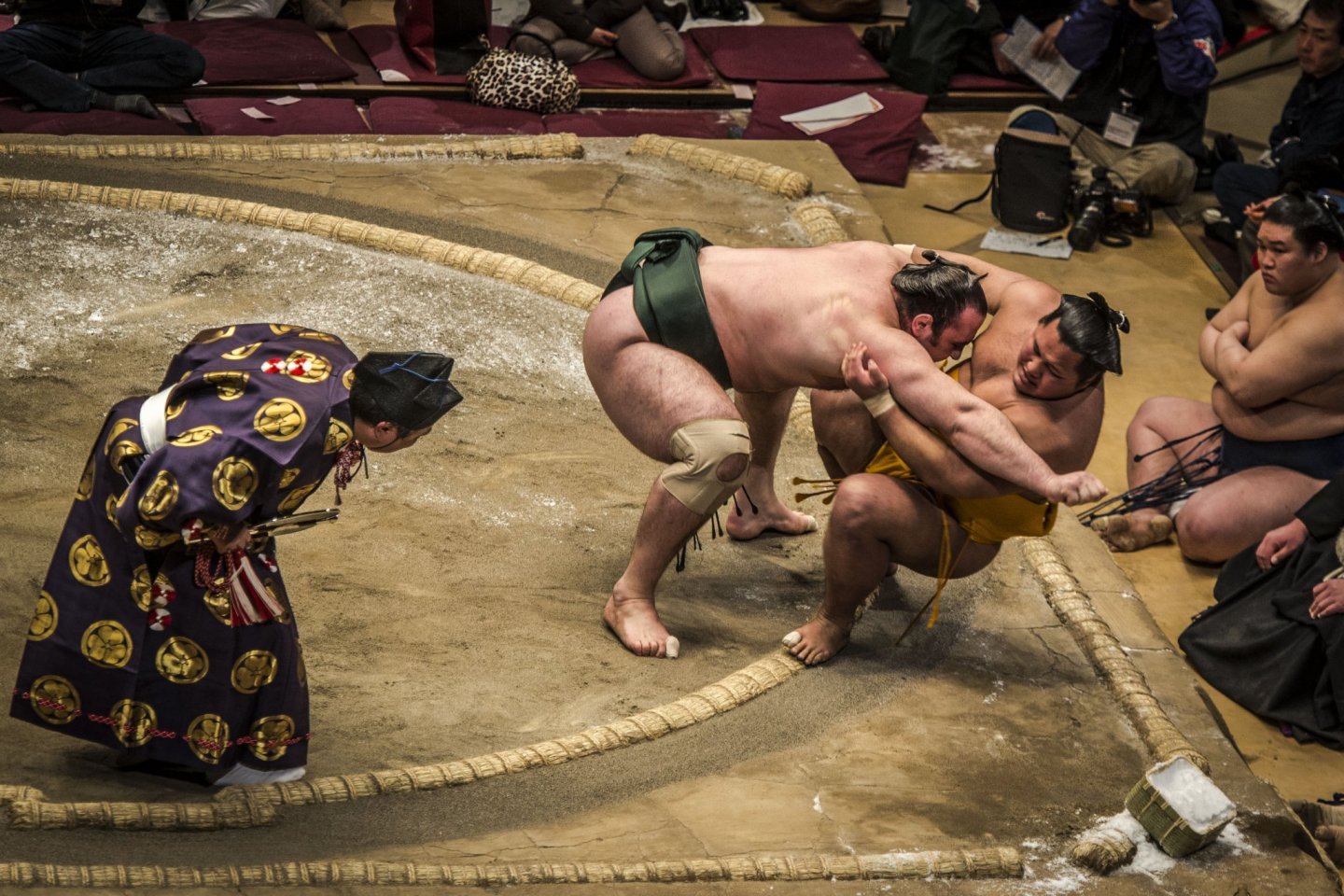Overview
You've loved watching your first sumo tournament and still have no idea what is going on. Right? To get you up to speed for your next tournament (or your first if you've been asleep), here is a guide to some basic sumo terminology.
The people
Referees are called gyoji while wrestlers are known as rikishi and are organised according to ranks. The highest rank is yokozuna, followed by ozeki, sekiwake and komosubi. The rest of the wrestlers in a professional tournament are ranked at various levels of maegashira.
A winning record in a tournament is kachi-koshi while a losing one is make-koshi. Yokuzuna with a losing record are encouraged to retire whilst ozeki are placed on a kind of probation called kadoban where they receive a chance to maintain their rank the following tournament.
The yobidashi is the announcer you will see who melodiously calls out the name of each wrestler to the ring.

The ring
Marked with a tawara straw rope, a sumo ring is called a dohyo and a new one is made prior to each of the six annual tournaments, or basho. Sumo has very strong Shinto roots and a dohyo-matsuri ring purification ceremony is held before each basho. Wrestlers, too, purify the ring before each bout in a shubatsu salt-throwing ritual.
Wrestlers wear nothing except for a mawashi loin cloth. When they perform the dohyo-iri ring entering ceremony at the start of a tournament, they'll wear a heavily embroidered apron called a kesho-mawashi.

The bout
Bouts begin once both wrestlers hands touch the ground. To encourage this referees will say "Te wo tsuite." The tachiai start is vital in sumo. If it is a false start, the referee will exclaim "Mada, mada!" while "Nokotta, nokotta" is the referee letting the wrestler know that they are still in the match. If wrestlers need some 'encouragement', you'll hear the referee yell out "Hakkeyoi!"

The judges
In the event that the referee's decision needs to be queried, the four black hakama-wearing ringside judges will enter the ring to confer. This is called a mono-ii. If a rematch is required, this is called torinaoshi.

So there you have it, some basic terminology to help you understand a bit more about the seriously addictive world of sumo.

























What a rich set of terms to help observers follow the action.